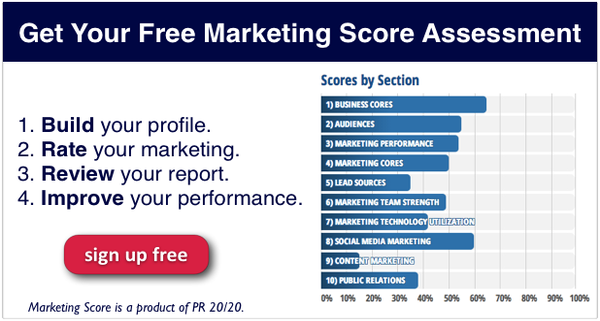 How many views does your average blog post see? Is it in the hundreds? Thousands? Tens of thousands?
How many views does your average blog post see? Is it in the hundreds? Thousands? Tens of thousands?
No? Well posts on LinkedIn’s influencer network receive an average of 30,000 each.
That’s according to Jeff Weiner (@jeffweiner), LinkedIn’s CEO, as he talks about the company’s vision for the next decade (worth the time if you haven’t seen it yet).
Now that LinkedIn is rolling out its publishing platform to all its members, marketers have another channel to consider. One with potential. The company aims to keep noise controlled, and deliver the best and most relevant content to individuals, through LinkedIn Pulse. If featured, your content has the potential to reach more members.
Dharmesh Shah (@dharmesh), co-founder of HubSpot and member of LinkedIn’s Influencer program, blogged about the brilliance of the platform last September. He also recently tweeted about how he now has more followers and engagement on LinkedIn than on Twitter.

Yes, it’s another channel, and it may get a bit busy now that the program is rolling out beyond initial influencers … Yet, as more and more third-party content distribution platforms pop up, marketers have to divide and conquer strategically. Consider the following when adding LinkedIn to your publishing mix.
What’s your end goal?
Most organizations are active in blogging and social media to improve overall brand awareness and thought leadership. These activities also have weight throughout the marketing funnel, as they can help generate leads, nurture relationships with leads, and foster loyalty among an existing audience. Look at your defined KPIs for blogging, social and overall brand activities when deciding how posts on LinkedIn will contribute to performance goals.
Also, be sure to think in terms of you organization and its professionals when developing your LinkedIn content strategy. LinkedIn is clear about the fact that it aims to showcase professional skills and expertise. Pulse posts boost an individual’s reputation, which can indirectly benefit that individual’s company brand. If encouraging your top executives or subject matter experts (SMEs) to post, be clear on content ownership. Define the implications—and guidelines—for developing one’s personal and professional brand.
Sample goals specific to LinkedIn Pulse:
- Grow thought leadership among your core executive team and SMEs: Elevate personal brands to build credibility, and borrow their personal networks. Split your content strategically—post one story to LinkedIn’s network for each post published to the organization’s own blog.
- Raise brand profile via your organization’s LinkedIn thought leaders: Share employees’ LinkedIn posts via the company LinkedIn page when relevant.
- Nurture qualified prospects: Tap into established, niche professional communities to build brand, engage and nurture prospects.
- Reach a larger audience, and drive traffic to your website: Include strong calls to action and cite company resources within posts. (It does not have to be a part of every post, but if it’s a natural fit, encourage writers to link back).
Track post views, engagement, and referral traffic to judge how LinkedIn (and other publishing platforms) move the needle toward KPI goals.
It takes time to write good content. How will you align resources?
With more platforms to publish and maintain, marketers have to strategically allocate hours. Let’s say your blog authors dedicate about 10 hours a month to writing content. How do you advise them to write for your own company blog, write a guest post, or write a post for LinkedIn? Is LinkedIn a channel with potential too great to ignore?
At your next editorial meeting, ask your blog editor to discuss the following to help individuals allocate time:
- Define how professional and organizational goals fit into the mix. While building early thought leadership, is it more important for your company to focus on reach, optimization, link building, or building content on its own site?
- Consider audience. If you’re writing for a start-up community, or positioning a thought leader there, Medium may be more worth your time than a blog on your own website.
- Help your team map topics and platforms. If a topic’s intent is building thought leadership, dedicate this post to a platform with greater reach, like LinkedIn. For posts aimed at conversion, stick to an owned platform where you can include a clear call to action or embed a lead form.
With a defined process behind content allocation, it should be easier to align assignments and cover your most important bases. If you’re still unsure, start with a 1:1 split (just because you’ve got to start somewhere).
Pilot a few posts to gauge return.
Before putting all of your eggs in the LinkedIn basket, test a few posts with those who gain early access.
Currently, the average Influencer post gets 31,000 views, 250 likes and 80 comments. Track what your own team’s posts see, compare to other networks, and use initial results to determine the level of resources you’ll dedicate to the network in the near future.
Is duplicate content a concern?
Jury’s still out. LinkedIn’s rights and responsibilities clauses emphasize that authors should only share content they own. “You can republish something that you have published somewhere else as long as it is your original content that you own the rights to.”
With that, it might be smart to clarify “who owns what content” among your team. Do individual bloggers own posts they author (or have ghostwritten)? What about posts from outside agencies (or content marketplaces), an organization’s content team, or submitted as guest posts?
Just putting it out there: don’t repost all of your previously published content to LinkedIn. #palmtoforehead
As a rule of thumb, I’m always weary of penalties around duplicate content, even if it’s not spammy. If you’re planning to repurpose or summarize a previously published article for LinkedIn, indicate where it was originally published with a link back to the original source.
On our radar …
It’s still early in the game as LinkedIn rolls its publishing platform out to all members, so we’re tracking relevant articles and resources to help us navigate this new platform. Below are a few. Please feel free to share more that you’ve found to be helpful within post comments, and we’ll add to the list.
Official resources from LinkedIn:
- LinkedIn’s Publishing Platform – Overview
- Best Practices for Posts on LinkedIn’s Publishing Platform
- Rights and Responsibilities for Your Posts on LinkedIn’s Publishing Platform
- Viewing Stats on Your Posts on LinkedIn’s Publishing Platform
Additional reads for marketers:
- LinkedIn Expands Blogging Capability, by Kristin Burnham (@kmburnham), senior editor at InformationWeek.
- The 7 Secrets to Writing Killer Content on LinkedIn, by Daniel Roth (@danroth), executive editor at LinkedIn.
- LinkedIn’s New ‘Publishing for All’ Raises Duplicate Content Questions, by Rebecca Churt (@RChurt), SEO marketing manager at HubSpot.
- The Definitive Professional Publishing Platform, by Ryan Roslansky (@ryros), head of content at LinkedIn.
- Here Are All The Ways You Should Be Using LinkedIn's Apps But Probably Aren't, by Jillian D’Onfro (@jillianiles), tech writer for Business Insider.
Mo’ platforms, mo’ problems?
As more content publishing platforms come into the mix, how are you allocating resources, stretching content, or focusing efforts in on a few? Curious to hear tips and experiences as the conversation continues.
Photo Credit: Charlotte Astrid via Compfight cc

%20Logo_BlueOrange_Trademark.png?width=800&height=269&name=Ready%20North%20(RN)%20Logo_BlueOrange_Trademark.png)




.jpg?width=300&name=Services%20Hub%203%20(3).jpg)


